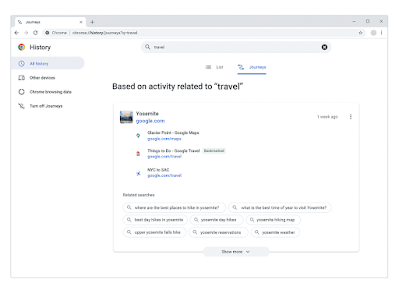Google uses technologies like machine learning to create more useful products, from filtering spam and updating maps to providing more relevant search results.
Chrome is no exception, as the company uses in-browser machine learning to make web images more accessible to people who are blind or have low vision.
It also creates real-time captions for online videos to serve people in noisy environments, and those who are hard of hearing.
This work continues in the browser, and the company has shared some recent and future machine learning improvements that provide a safer, more accessible, and more personalized browsing experience.
According to Google, these updates are powered by machine learning models across the device. This means that your data remains private and will not go outside the device.
Google Chrome's Safe Browsing feature helps protect billions of devices every day by showing warnings when people try to go to dangerous sites or download dangerous files.
Beginning in March of this year, Google rolled out a new machine learning model that identifies potentially malicious websites and phishing attacks 2.5 times more than the previous model - resulting in a safer and more secure web.
To further improve the browsing experience, the company is also developing how people interact with web notifications. Page notifications help deliver updates from sites you're interested in. But the claims can become a nuisance.
The browser predicts when prompts are unlikely to be granted permission based on how the user has previously interacted with similar prompts, and silences these unwanted prompts. This is in order to help people browse the web with the least amount of interruption.
In the next version of the browser, the company plans to include a machine learning model that makes these predictions across the device.
Google Chrome Machine Learning Blocks Push Notification Requests
The company earlier this year launched the Journeys feature to help people keep track of their online browsing.
- Using machine learning and Journeys, Chrome collects the pages you've visited on a specific topic. And it's easier for you to pick up where you left off instead of scrolling through your browser history.
- The company also uses machine learning to make those sites available in your preferred language. It launched the updated language selection form in order to know the language of the page, and whether it needs translation to match your preferences.
- Later, Google plans to use machine learning to fine-tune the toolbar in real time. And that's with different buttons like sharing icons or voice search showing you the times and places you're likely to use them.
The search giant aims to create a real and constantly useful browser through the capabilities offered by machine learning.





0 Comments